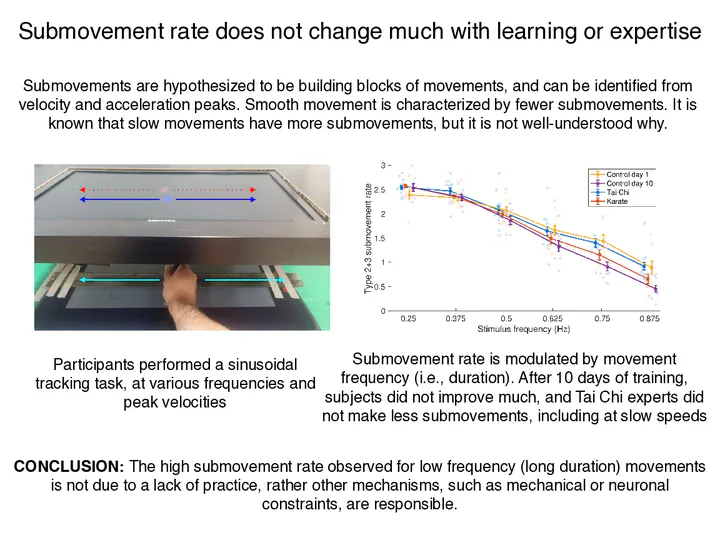A slow limit: Extensive motor training can not overcome a limit on the production of slow and smooth motion

Abstract
Previous research from several paradigms indicated that people have difficulty in producing slow and smooth movements (SSM). It is not clear whether these difficulties are due to biomechanical constraints, planning constraints, or lack of experience with moving slowly. Here, we investigated the latter possibility: we empirically tested whether short-term practice and long-term expertise with moving slowly would result in an increased ability to perform SSM. In Study 1, novice participants completed 10 training sessions in which they moved a stylus on a digitizing tablet as they traced an ellipse that moved at different frequency/peak velocity combinations, with frequencies ranging from 0.25 Hz to 0.875 Hz. In Study 2, experts in slow movement (tai chi performers) and fast movement (karate performers) completed the same task in one session. The results indicated that all participants had difficulties in producing SSM, as evidenced by an increase in submovement rate with decreasing frequency. Participants in Study 1 did show a marked improvement in their ability to produce fewer submovements while reducing mean squared jerk (MSJ). These short-term improvements were not evident in long-term slow motor expertise (i.e., tai chi). Taken together, our results suggest that SSM are likely difficult to produce due to a combination of several factors: lack of experience, planning, biomechanical, and neural constraints.
Type
Publication
Journal of Neurophysiology